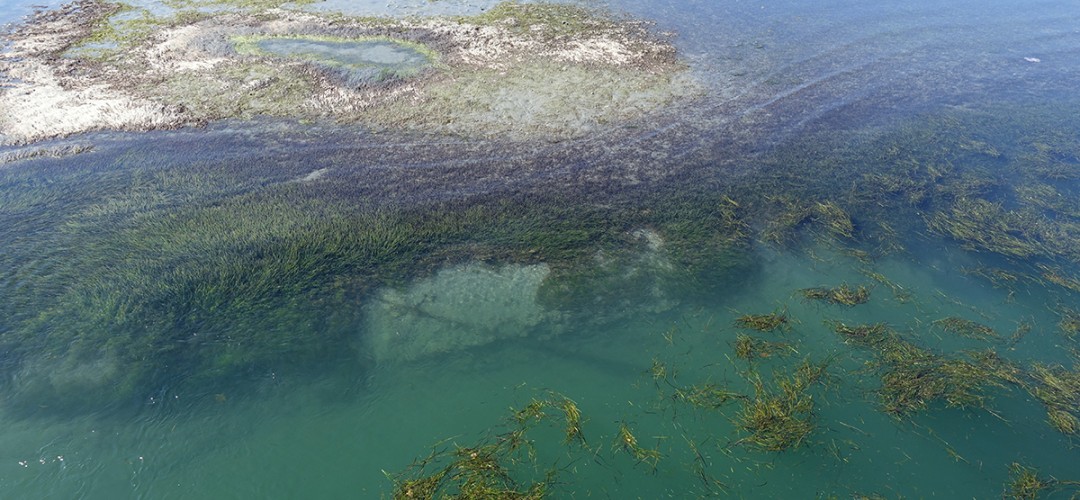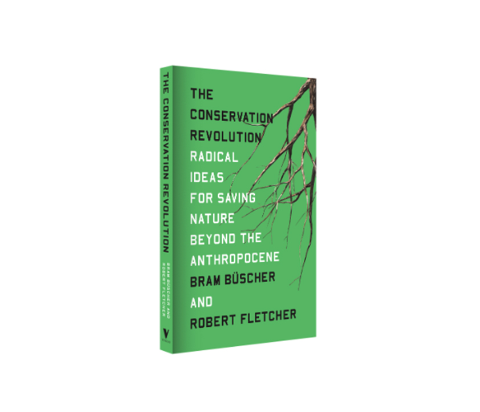"The Conservation Revolution", relevant considerations for the conservation of the Venice Lagoon
"The Conservation Revolution"

Vital team reviewed a book that serves to imagine a better ecological future for the city and lagoon of Venice. Vital’s objectives to conserve and restore the saltmarshes in the Venice Lagoon are tied to promoting a different practice and narrative regarding the Lagoon's natural environment.
The book “The Conservation Revolution: Radical ideas for saving nature beyond the anthropocene” (Verso, 2020) by B. Büscher and R. Fletcher frames the actual state of the environmental conservation debate and its diversity of perspectives, provides insights to why mainstream conservation and its contemporary responses are failing in addressing the ecological crisis and why a more radical approach is needed now. It imagines alternatives to the status-quo as a “liberating exercise that allows for harnessing anxieties triggered by the devastating implications of our contemporary crises in order to unleash positive energy and anti-catastrophic prospects”, like seeing Venice sinking or empty of residents.
Throughout the central chapters, the authors provide a deep interrogation of the nature-culture dichotomy as their central political ecology critique of capitalist conservation. The development of capitalism allowed for new forms of rational, technocratic, mechanistic and profit-driven manipulation of nature. This was ethically possible while humans saw themselves as different from “the rest of nature”. According to the authors, it is an historical fact that conservation, and in particular the creation of nature reserves, played a role in the capitalist process of wresting people from the land, forcing them to move from country to town in search for urban employment.
Contemporary market-based mechanisms to compensate for negative environmental impacts offsets entail efforts to deliver revenue to resource-dependent populations to support conservation in exchange for intensified development elsewhere. The transfer of funds in these mechanisms is almost always from North to South, grounded in the fact that offsets are more efficient where opportunity costs are lowest.
It’s evident that the underlying mismanagement that created the ecological crisis in the first place is not really addressed by these transactions.

Alternatively, the authors set out their vision of non-dualist “convivial conservation”, a conservation that enables “living with” biodiversity and emphasises “the embedded value” rather than the economic one: not economic cost-benefit evaluation but “affective affinity”. It relies on the following principles: nature and society are dialectically integrated, however some sort of distinction between humans and nonhumans is needed to develop both research and political action around environmentalism and historical responsibilities; conservation is not opposite to development, but it should start “developing” beyond capitalism; the system through which we ascribe value to nature matters, hence the valuation should not be the exclusive domain of those interested in capital accumulation.
Saving species is only meaningful within broader social, cultural and environmental contexts
In this way, we can move beyond the reductionist idea of homo economicus that is responsible for many of the actions that have endangered our planet. For example, tourism as an elitist, consumerist escape becomes “long-term visitation focused on social and ecological justice, preferably in relation to the natures closer to where we live”. From an idealised idea of nature, we need to shift towards an “everyday nature”, “in all its splendour and mundaness” in order to find a meaningful engagement with it. It follows that the final shift is from privatised expert technocracy, a top-down way of managing nature towards a common democratic engagement, focused on “nature-in-context”. Indeed, saving species is only meaningful within broader social, cultural and environmental contexts, as the valuation of nature should be done by the custodian communities, and not by outsiders.
To advance their “convivial conservation” vision, the authors propose a theory of change that deals with short and long-term objectives based on concrete actions to transition from “here to there”. The long-term goal is to open the conservation debate to politics, acknowledging the different interests, actors and powers while creating a platform to overcome these same differences. At the same time, these transformations are aimed at the creation of conservation landscapes that integrate human and nonhumans and that develop funding arrangements independent of market expansion and capital accumulation.
The policy of trying to “engage business” must change. To be more effective, according to the authors, NGOs should continue to work with businesses but with stricter conditions whereby businesses start moving towards a different economic model beyond accumulation and economic growth.
In line with the spirit of the authors, Vital is advocating a fresh review of the ecological state of the Lagoon while actively creating local and national alliances
In line with the spirit of the authors, Vital iniaitive not only is advocating a fresh review of the ecological state and challenges concerning the Lagoon, but is also actively creating local and national networks and alliances across disciplines in relation to political action for the conservation of nature, based on social and environmental justice principles. Convivial conservation could be applied to Venice as a living city surrounded and mainly supported by the natural dynamics of the lagoon system, where engaged residents and visitors are the custodians of its complex ecological variety of needs.
A more polycentric and localised governance is necessary for a deeper integration of the community, based on participatory democracy in conservation decision-making. Also, critical to the lagoon is the generation of funding mechanisms beyond tourism (which is actually one of the main causes of the degradation of the city and its ecosystems) and other market-based mechanisms. Novel public-private partnerships which protect community rights and promote a new sense of natural commons, thus “living with” nature, according to the authors, requires less funding since it implicitly reduces human-animal conflicts.
While advocating for better solutions for ecosystems conservation and restoration at the national and international level through actions and alliances, Vital aspires to lead by example at the local level, manifestly lobbying and informing decision-makers while operating alternative approaches to safeguard the natural lagoon ecosystems. They might seem bold and over-ambitious, but are radically needed and ready to be explored.
◾